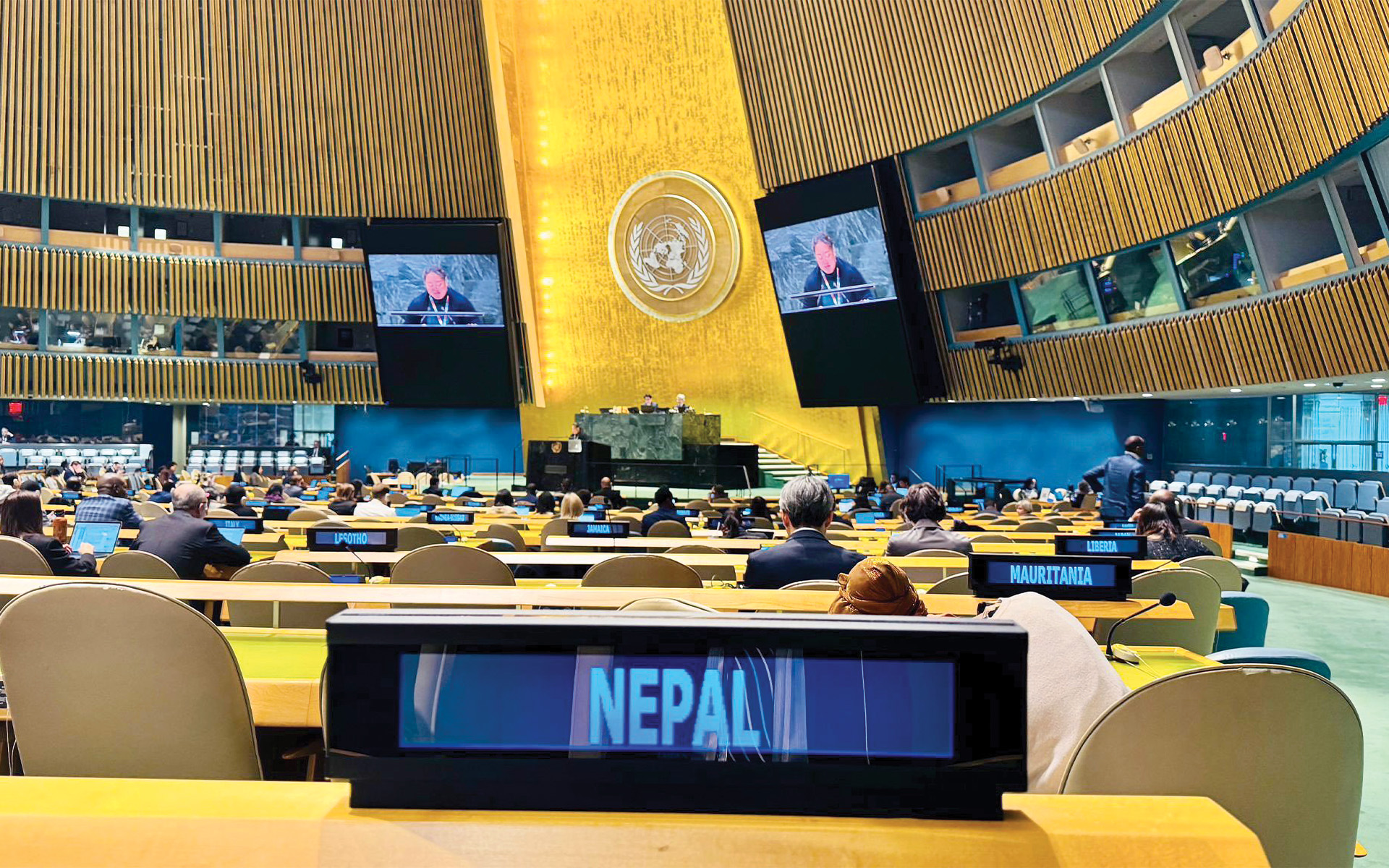
Nepal’s diplomatic landscape and international relations have been evolving steadily from the ancient times to the modern era. Often described as the ‘yam between two boulders’, Nepal, in the 21st century, is increasingly being seen as a vibrant bridge between the two global economic giants – India and China.
In the 20th century, professor of political science and writer Leo E. Rose had underscored Nepal’s geopolitical importance. Rose, in a book named ‘Nepal: Strategy for survival’, had described Nepal as a strategically located nation caught between two powerful neighbors. Nepal continues to be defined by its landlocked geography, as it is positioned between India to the south, east, and west, and China to the north.
Currently, in the 21st century, Nepal maintains bilateral relations with 183 countries and is a member of numerous multilateral institutions such as the United Nations and the Non-Aligned Movement (NAM). It also actively engages as a crucial partner in regional organizations like SAARC and BIMSTEC. This network highlights Nepal’s position as one of the active ‘smaller’ states in the Global South.
Nepal’s foreign policy is grounded in neutrality, non-alignment, and a strong commitment to international law that can be understood as critical principles in an increasingly uncertain global environment. As the 21st century is often heralded as the Asian Century, Nepal, given its unique positioning, can utilize this momentum to advance its aspirations of economic progress and development.
Nepal must explore diverse diplomatic avenues to leverage her strategic and cultural advantages to move the foreign policy in the right direction. To do so, Nepal needs to enhance economic diplomacy, engage in Track II diplomacy, and actively become a vocal advocate for climate justice — through platforms such as the Sagarmatha Sambaad, Nepal’s own global dialogue forum.
Equally important is the promotion of cultural exchanges based on a development-oriented approach. Likewise, Nepal’s extensive migrant workforce, along with its potential in tourism, public engagement, and soft diplomacy, can be powerful tools for international outreach. The country’s commitment to regionalism and multilateralism, along with strong engagement with the diaspora, can further enhance Nepal’s global presence. Additionally, in today’s digital age, technology is considered a vital domain for diplomacy. As Artificial Intelligence reshapes global interactions, Nepal must remain vigilant on how these tools impact foreign relations and security, with the rise in cyber threats across the globe.
Nepal must continue to assertively define its economic interest as economic diplomacy remains a key instrument in an era marked by trade agreements, tariffs, and mineral diplomacy. Trade wars between larger powers have had a strong impact on countries like ours. As Nepal continues to contribute actively to global diplomacy through multiple platforms, its role in international peacekeeping through the UN, deploying personnel to crisis zones and vulnerable regions worldwide, remains a significant achievement.
At last, it is vital that Nepal focuses on further strengthening her bilateral, regional, and multilateral relations. Doing so is not only essential for addressing existing geopolitical challenges, but also for placing the country back on the track of sustainable development and international relevance.